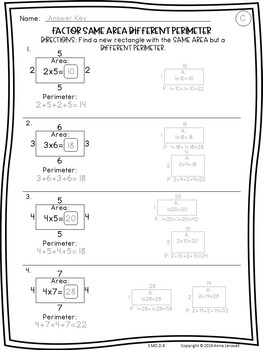

You know that the area of a square is equal to: \(a+a+a+a=4a\). How much ribbon does she need to use to decorate this tablecloth? If this tablecloth is square and each side of the square is \(3\) meters. Sarah plans to decorate a tablecloth with a ribbon. Then the area of a rectangle: \( 10 × 5=50\) Area and Perimeter – Example 2: The area of a rectangle is provided via the formula, \(A=Length × width\). Area and Perimeter – Example 1:Ĭalculate the area of a rectangle \(10\) cm long and \(5\) cm wide. Often, you’ll many times find word problems where \(2\) of the values in \(1\) of these formulas are provided, and you’re expected to locate the \(3\)rd. So, \(Area = a×a\) where \(a\) is the length of each of the square’s sides. The square’s area is the product of the length of each of the sides with itself. Thus, the formula for finding the perimeter of a square \(= 4 ×\) (length of any \(1\) side). The perimeter of the particular square is:

Because all sides of a square are identical, you merely require a single side to determine the perimeter. The perimeter of a particular square is \(a + a + a + a\). Thus, a square’s perimeter can be determined by adding \(4\) sides. The perimeter of a square is the total length of all the sides. Squares are quadrilaterals where every side has the same length along all four corners are right angles. The area \(A\) of a rectangle is provided via the formula, \(A=lw\), where \(l\) is the length and \(w\) is the width. The perimeter \(P\) of a rectangle is provided by the formula, \(P=2l+2w\) where \(l\) is the length and \(w\) is the rectangle’s width. All rectangles are as well parallelograms, however, all parallelograms are not rectangles. Rectangles are parallelograms having \(4\) right angles.

+ Ratio, Proportion and Percentages Puzzles.


 0 kommentar(er)
0 kommentar(er)
